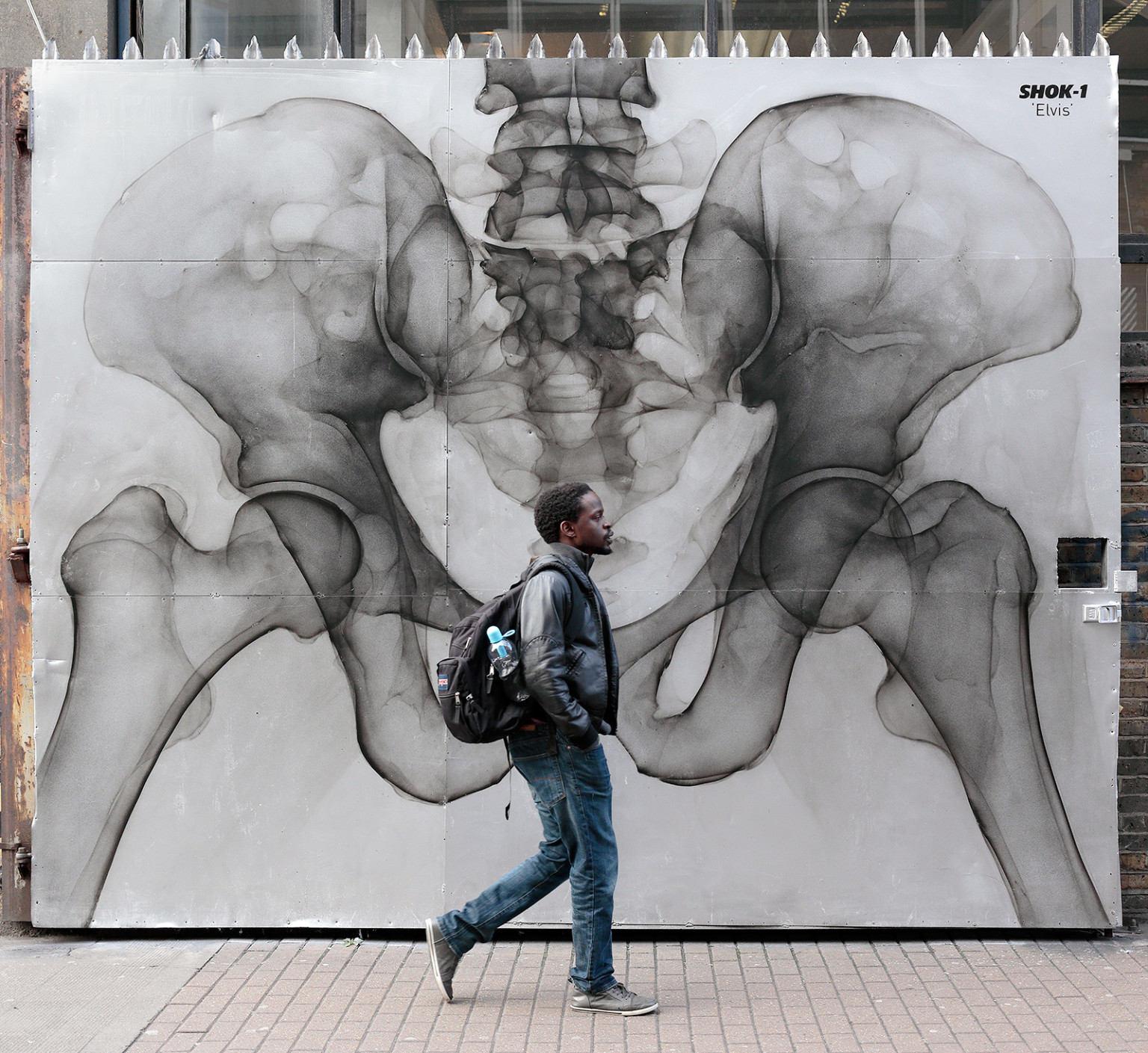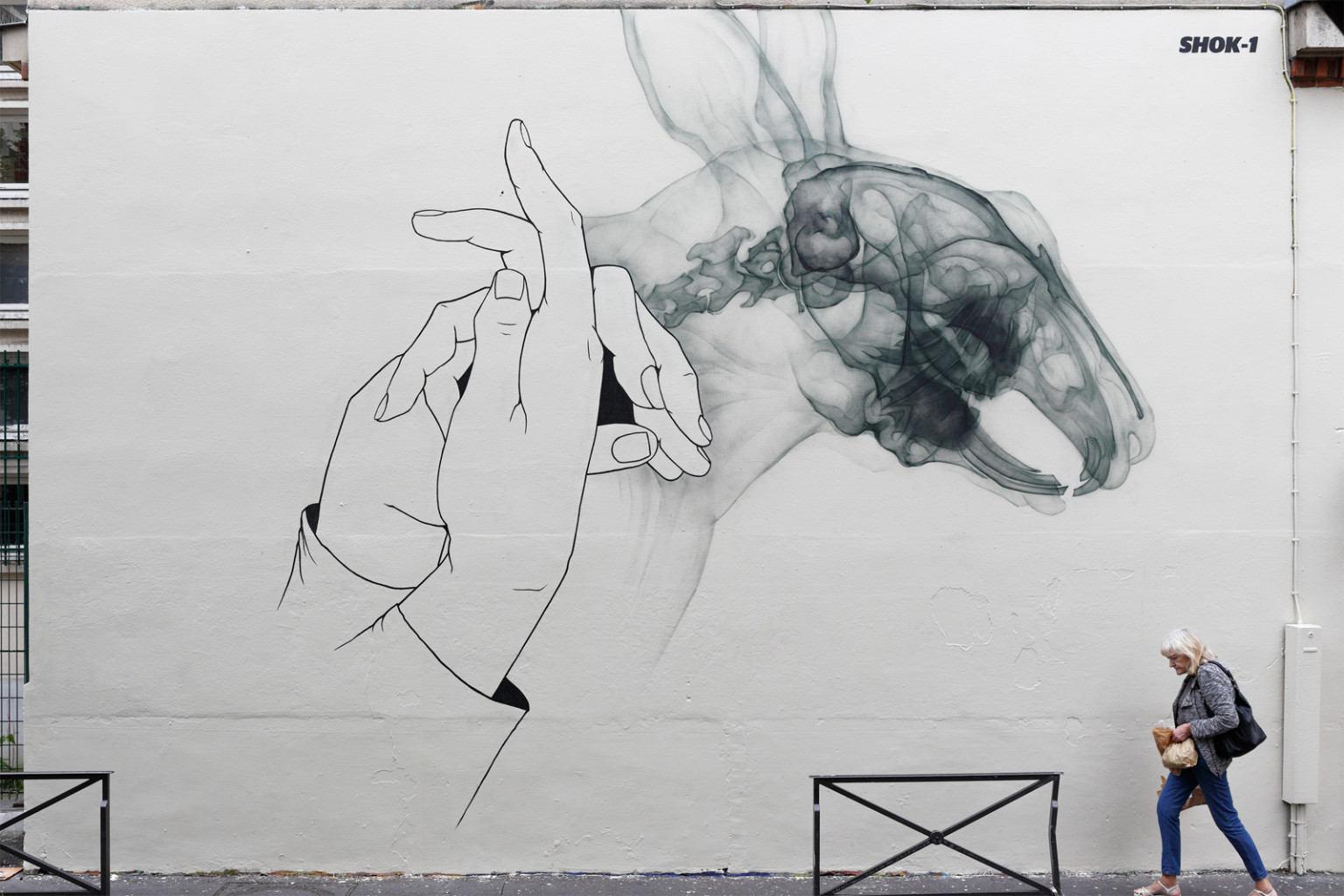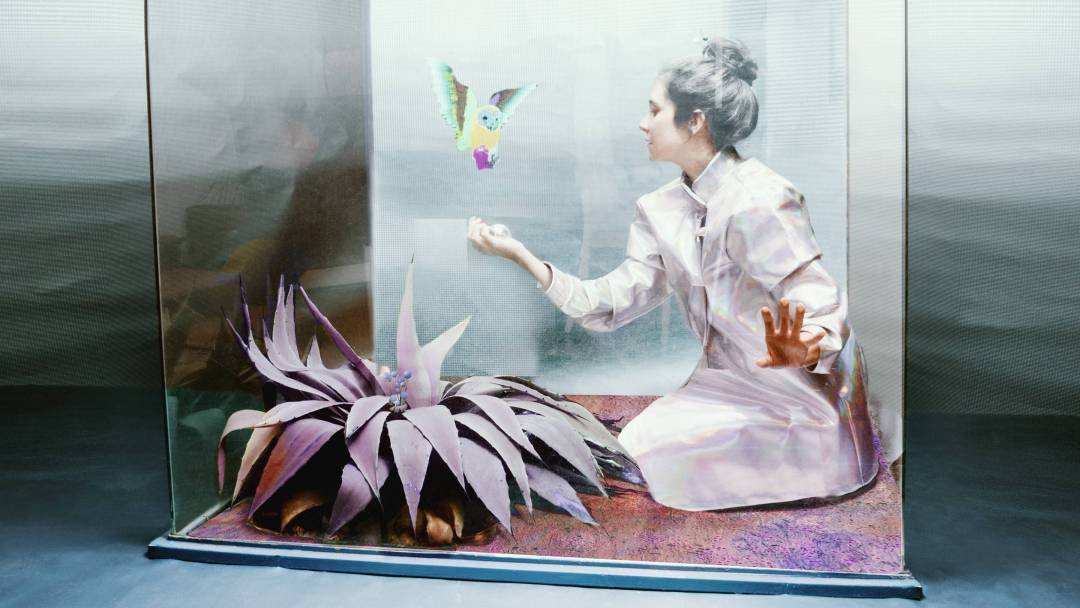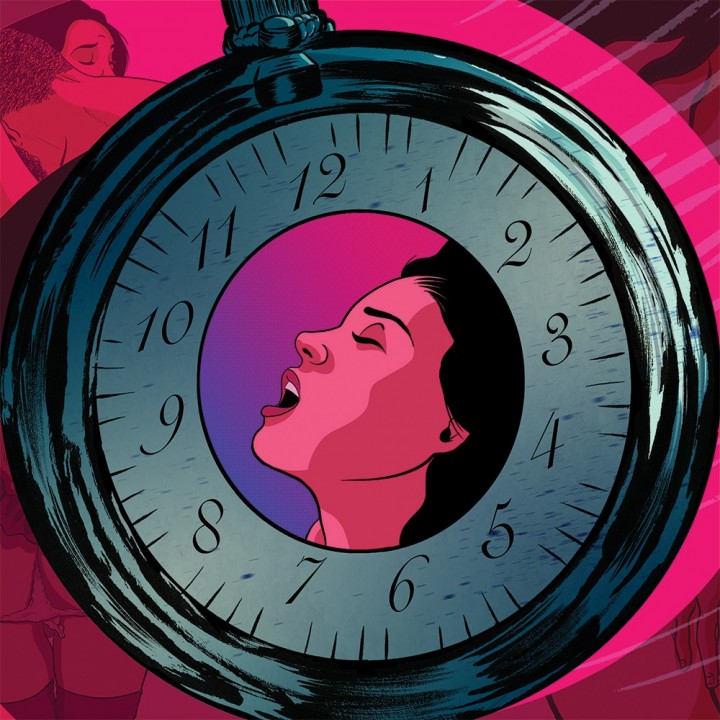
Aerosol X-Ray Art: Where Art and Science Meet
The arts and sciences have always found themselves intertwined, pushing and pulling against each other, riffing in the pursuit of intellectual expression. This relationship has yielded works that question theories of color–a la George Sauret’s A Sunday On La Grande Jette–to geometric explosions of the physical form–Pablo Picasso’s Girl Before A Mirror. Then there were artists whose works were so scientifically oriented that they continue to be confused for scientists, as is the case with Leonardo da Vinci. Regardless of these creator’s innate scientific interests, artists like da Vinci and works like The Vitruvian Man emphasize that the link between the arts and sciences can be found in the body, in anatomy, by deconstructing and reconstructing what lies within to reveal universality via humanity.
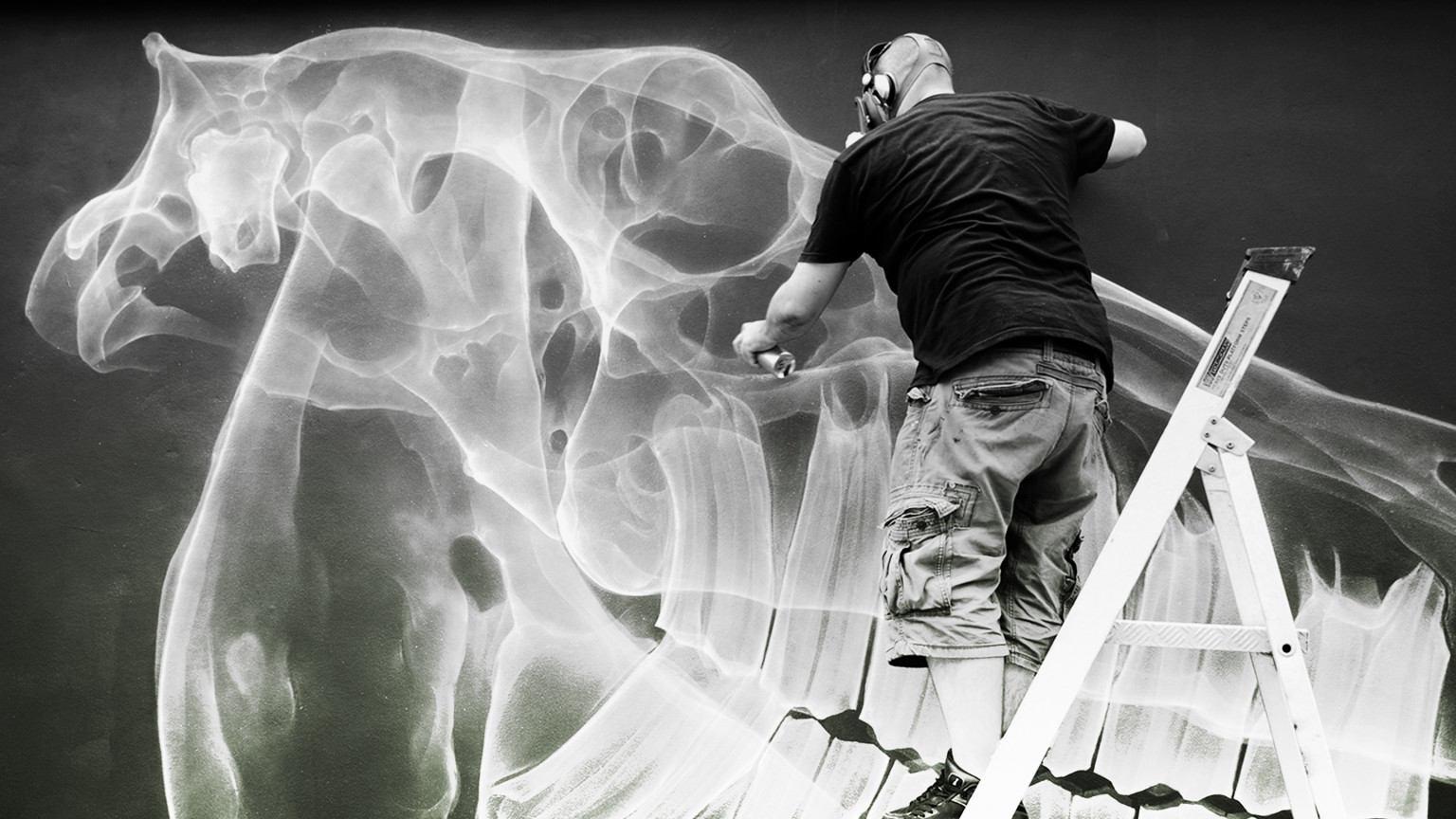
I grew up with art and was always passionate about it, but I also had an aptitude for the sciences. The education system here in England very much funnelled me towards the latter; their sentiment at the time was to discourage school kids from the idea of having a “career” in art. In fact, even recently the Education Secretary was telling young people to avoid the arts for reasons of money, which angered me.
So it took a very long time but eventually those two sides of my life came together and unified into my X-ray style. When I first started working on it I thought it was some weird nerdy personal thing that I was indulging myself with, I had no idea that it would become so popular.
Our kind of art has become massively visible and we have the opportunity to reach a huge amount of people. Personally I think science is super cool but I know there’s a notion that some people hold that it has an “image problem.” I was surprised when Breaking Bad first came out; the science thematics in it run deeper than just the credits (look up the Heisenberg Uncertainty Principle for one of the in-jokes they put in there). I read that there had been a surge in kids studying chemistry because of the show. I love that. I can believe it for sure because the first question I always used to get asked when I told people I studied chemistry was, “Can you make LSD?!” I’d be pleased if what I do could help to bring an appreciation of science into popular culture.
I’ve had a lot of interesting people reaching out: London Zoo, the clinical veterinary anatomist at Cambridge University, The Rontgen Society in Berlin, TED MED etc. I’m looking forward to working more in those kinds of spaces.
The elegance of a perfect composition could be likened to that of a perfectly formulated equation.
They are both very challenging in different ways. With the realistic anatomies, I really strive to be as factually accurate as I can. I have a lot of medical professionals who follow my work--doctors, radiologists, surgeons, etc. If I make a mistake, they let me know about it for sure! But it’s important to me that I don’t converge into illustration, so I try to approach it as an exercise in painting rather than getting too lost in the medical aspects. I hope that through the unity of techniques, concepts and a sense of accuracy, I can express some things I want to say about my value systems and how I think we should be relating to each other and the world.
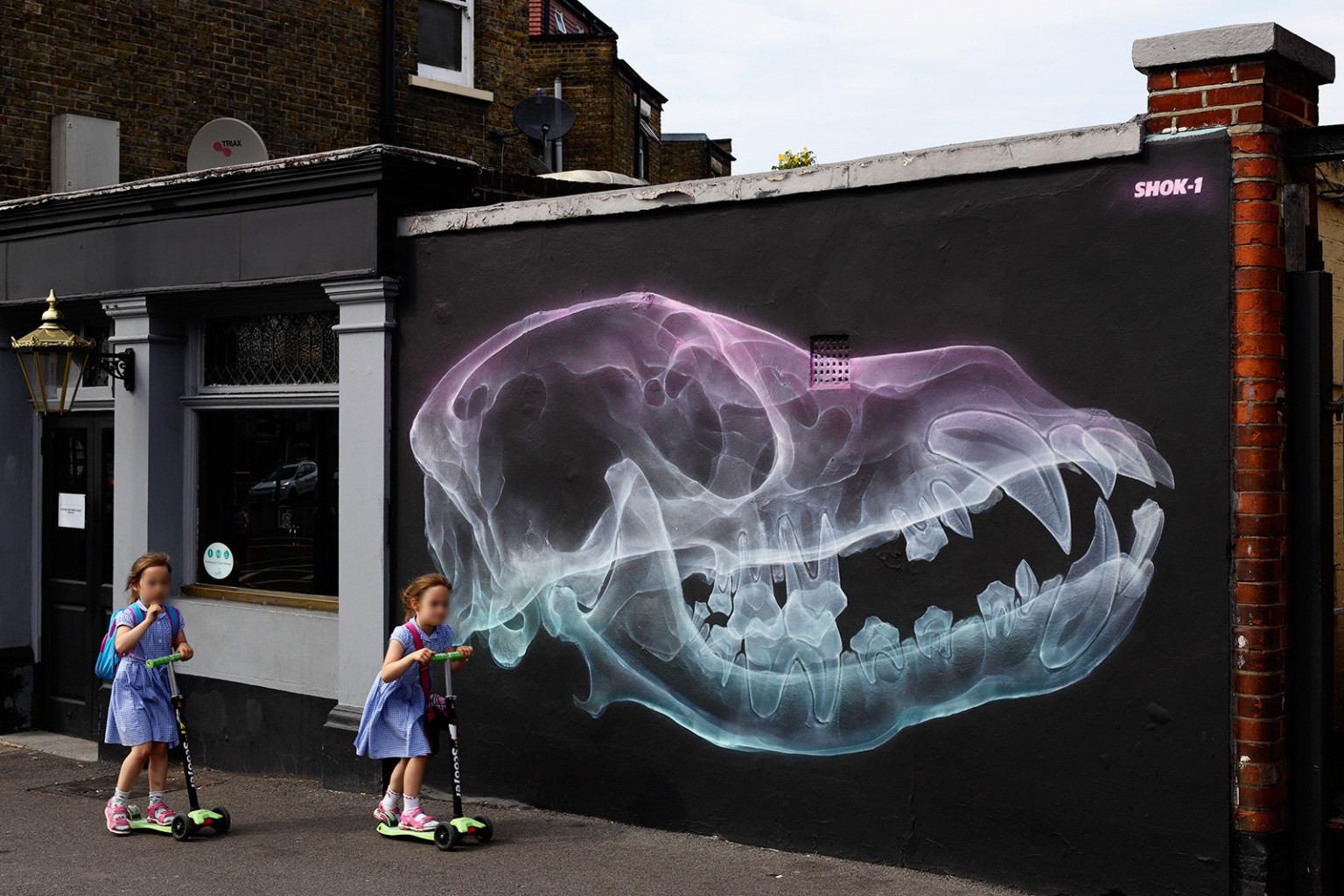
Well, Da Vinci was of course working during the Renaissance. I think in our current era we are tending towards a dangerous period in history, a kind of anti-renaissance, where experts are attacked and silenced and anti-intellectualism is on the rise. So my canvas is very different to his, I feel. Anything that promotes sense, logic and the scientific method seems worthy to me.
Your work draws viewers back to their bodies, reminding them of their personhood and the universality of the human form. Do you think modern persons are disconnected from their bodies (and each other) in a way?
Good question. I do have a strong sense of that disconnect, yes. I have spent a great deal of time trying to turn walls into a kind of perfect black void before I painted a subject. The preparing of the surface was always a sort of contemplative period for me…I found myself thinking more and more about what that black space was, what it represented. I came to the conclusion in the end that it was the space between people, the abyss that sits between true understanding and harmony. I guess maybe all art happens there.
How does anatomy in art push viewers to confront the more unsavory aspects of humanity?
There’s a Pollock quote I really like. In critique of his abstractions, an interviewer asked him, "Should art not be based on nature?" He replied, “I am nature.” It’s such a simple, concise reply that it’s perhaps easy to miss how profound it is. We talk about man-made versus natural as if we are apart from nature, above it. But we’re not. We are still nature. Our bodies and our actions in the world are a part of it. I think certainly at least Western culture has lost a lot of that relationship; a dangerous disharmony.

